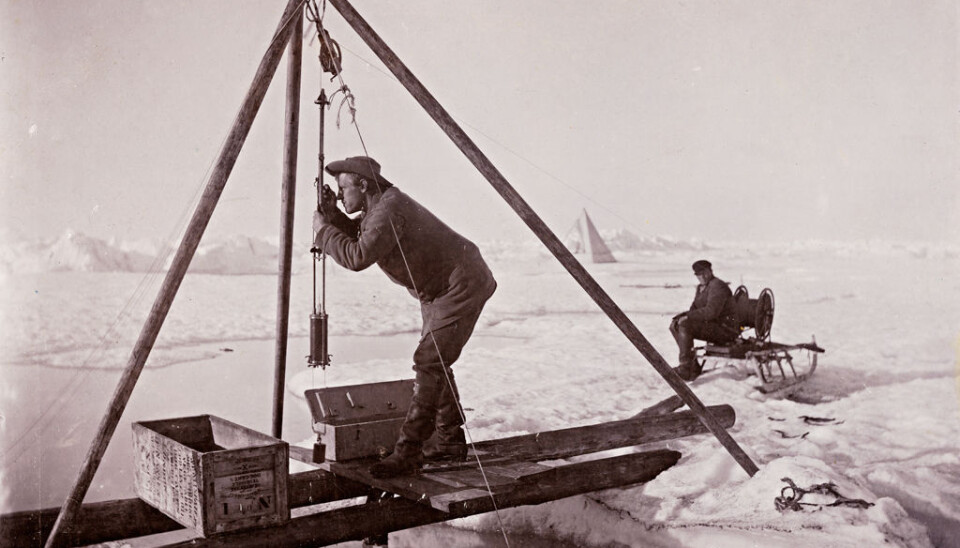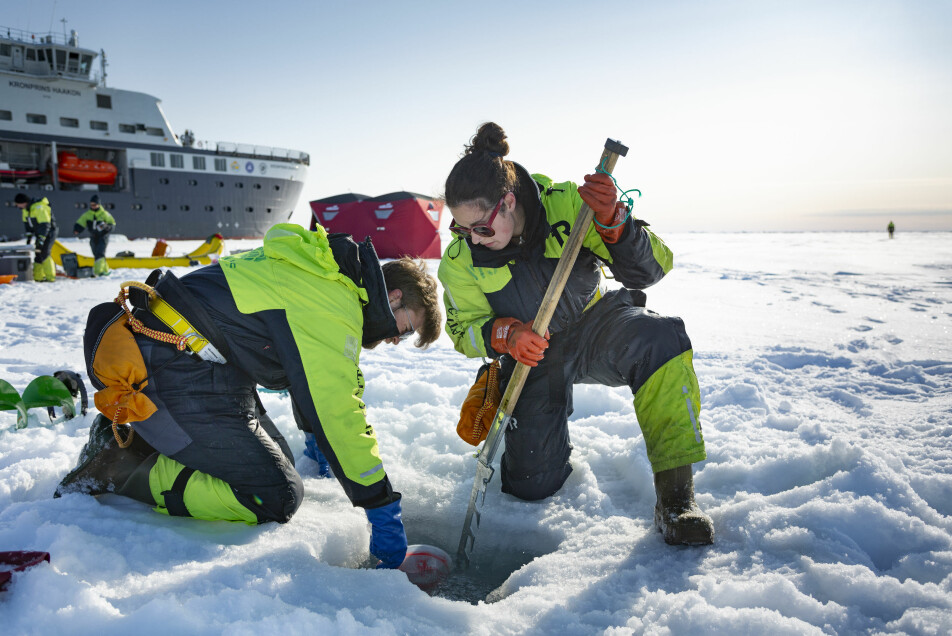
Three good reasons to visit the Arctic Basin in 2021
125 years since the return of Nansen’s Fram expedition
Exactly 125 years after the research vessel Fram with Fridtjof Nansen as scientific leader returned from its drift across the Arctic Basin, the Nansen Legacy revisits the region with Norway’s new research icebreaker Kronprins Haakon. This anniversary is the first of several good reasons why it is timely to revisit and extend our exploration of the Arctic Basin right now.
When Fridtjof Nansen’s expedition was completed in August 1896, his team had discovered the deep Arctic Basin. Since it was previously assumed that the central Arctic Ocean was shallow like the surrounding shelves, the great depths of >3000 m took them by surprise. They also brought proof of the Transpolar Drift, an ocean current crossing the Arctic Basin, as well as on how ocean currents from lower latitudes enter and impact the Arctic Ocean.
The changing Arctic urges better understanding
Presently, the Arctic Basin is changing in many ways as a result of rising global temperatures. That is the second good reason to pay more attention to the Arctic Basin. There are limited amounts of physical, chemical and biological data and especially time series from the central Arctic region. The declining sea ice cover, however, is well documented, as is the regional freshwater accumulation in the Beaufort Gyre, a circular surface current over the Amerasian part of the Arctic Basin.
Also an increasing similarity to the North Atlantic in the Eurasian sector is taking place including the northward expansion of Atlantic species. The recent ice-drift projects Norwegian Young sea ICE cruise 2015 (N-ICE 2015) and Multidisciplinary drifting Observatory for the Study of Arctic Climate (MOSAiC 2019/2020) have provided valuable data on the seasonality of both the physical-chemical environment and biological dynamics over periods of 6-12 months. Still we lack understanding of how the system functions and changes on regional levels, but also on how different regions are interconnected on a Pan-Arctic scale. This gap requires a follow up to the baseline studies carried out during the N-ICE and MOSAiC.
The Nansen Legacy project, Norway´s joint Arctic marine science effort, has since 2018 investigated the seasonally ice-covered and rapidly changing northern Barents Sea. We cover both seasonal and interannual variability along a climatic gradient across the Barents Sea shelf, shelf-break and adjacent deep Arctic Basin. This year, honoring Nansen’s return with the Fram 125 years ago, we zoom out and extend the climate gradient across the entire Nansen Basin, the Gakkel Ridge and into the Amundsen Basin in the central Arctic Ocean. The motivation is to better understand to what degree changes observed on the shelf and in the inflowing Atlantic Water propagate into the Arctic Basin. Moreover, the deeper parts of the basin, which are filled with older water, are not well investigated. Our investigation is interdisciplinary so that we can grasp the complex interactions involved in changing climate and ecosystem responses. Our study targets processes and interactions across the atmosphere, sea ice, ocean and seafloor.
Synoptic observations: connect Arctic knowledge to a ‘whole’
A third good reason to visit the Arctic Basin this year is the international joint research initiative, the Synoptic Arctic Survey (SAS). The SAS aims to conduct comparable ocean measurements at almost the same time in the different Arctic regions. This approach will facilitate [b1] a large-scale picture of the status and change of the Arctic carbon cycle and marine ecosystems including relevant physical drivers. The Arctic regions are interconnected, but it is not yet well understood how changes propagate from one region to another. With every nation providing puzzle pieces from their region, the understanding of the whole Arctic Ocean can be improved. The Nansen Legacy expedition with RV Kronprins Haakon contributes to the SAS from the Norwegian side with an extended transect from the Barents Sea shelf break to the Amundsen Basin. At almost the same time the Swedish icebreaker Oden and the Canadian Louis St. Laurent each take the same type of measurements in other slices of the Arctic Ocean. Previous cruises in SAS have been performed in 2020 by the Japanese RV Mirai and the Korean RV Aaron.
The Synoptic Arctic Survey coincides with the start of the United Nations Decade of Ocean Sciences for sustainable Development (in short: Ocean Decade). The Ocean Decade also includes the Arctic as a target region due to the major changes seen here over the past few decades. An important step for the scientific investigation of the changing Arctic Ocean is an international agreement to prevent unregulated fisheries in the Central Arctic Ocean for the coming 15 years. The agreement entered into force this summer, and gives scientists time to generate knowledge for the management of the regions fisheries.
Hence, 125 years after the Fram expedition returned from the Central Arctic Ocean with the discovery of the deep Arctic Basin, there is an urgent need to update and extend our understanding of how climate changes impact the Arctic. This year major steps are taken in the right direction.








